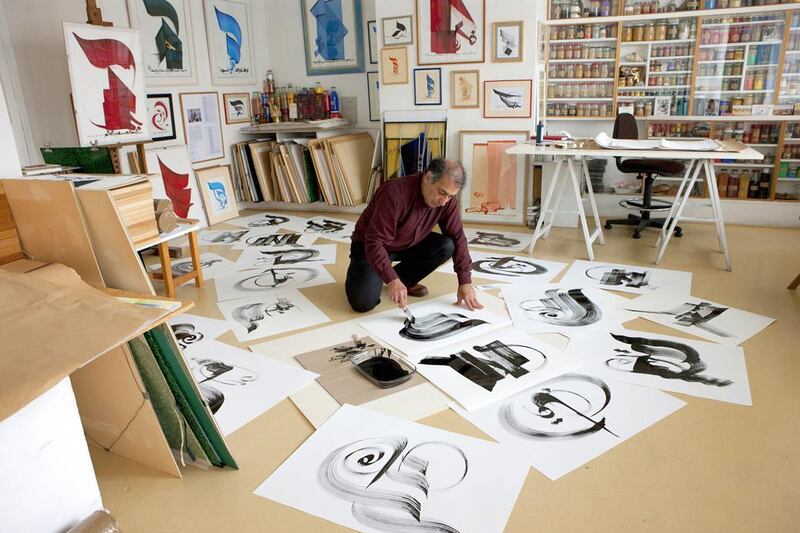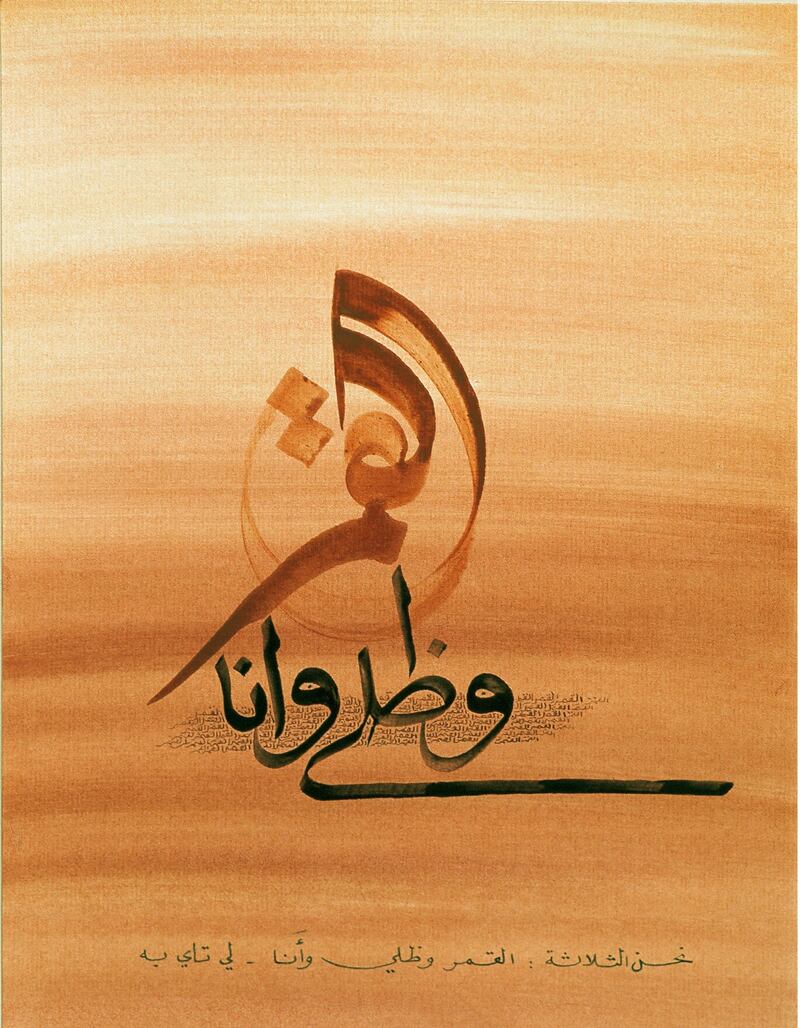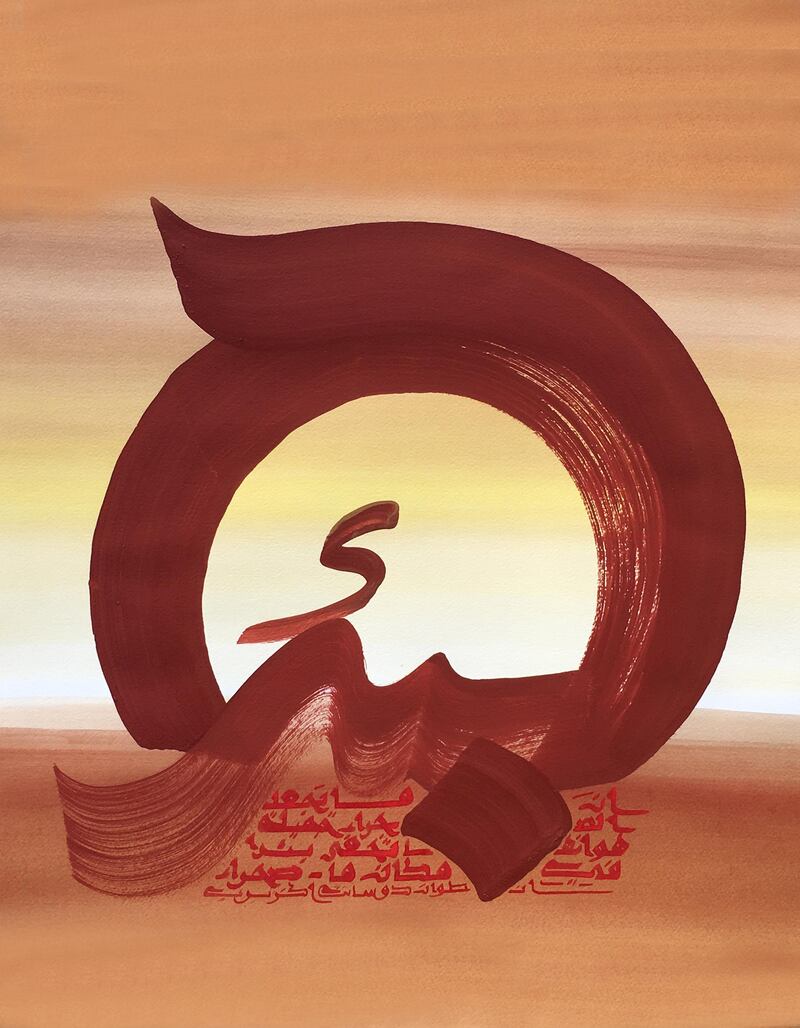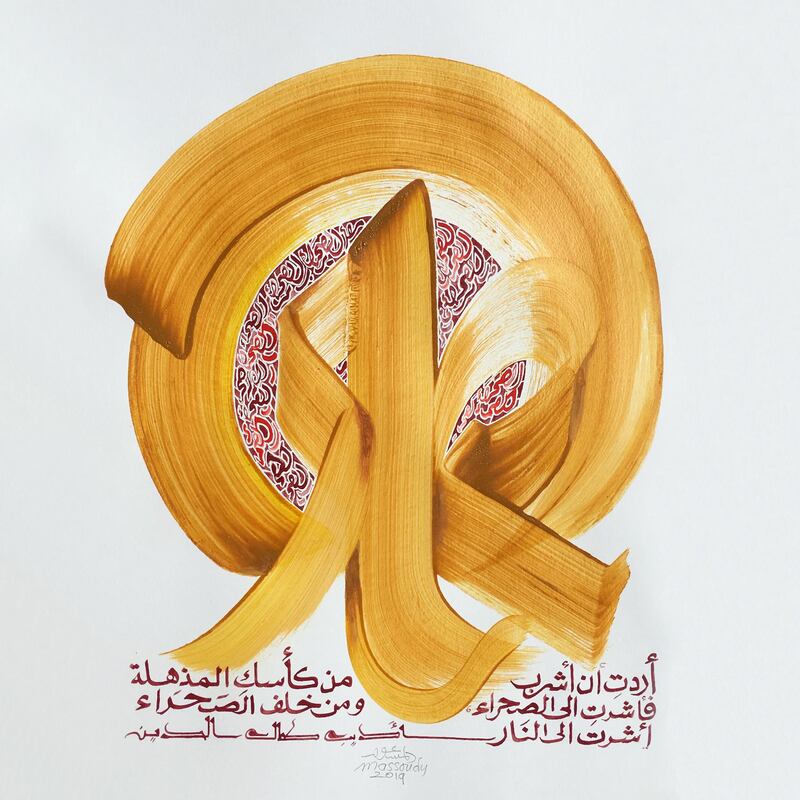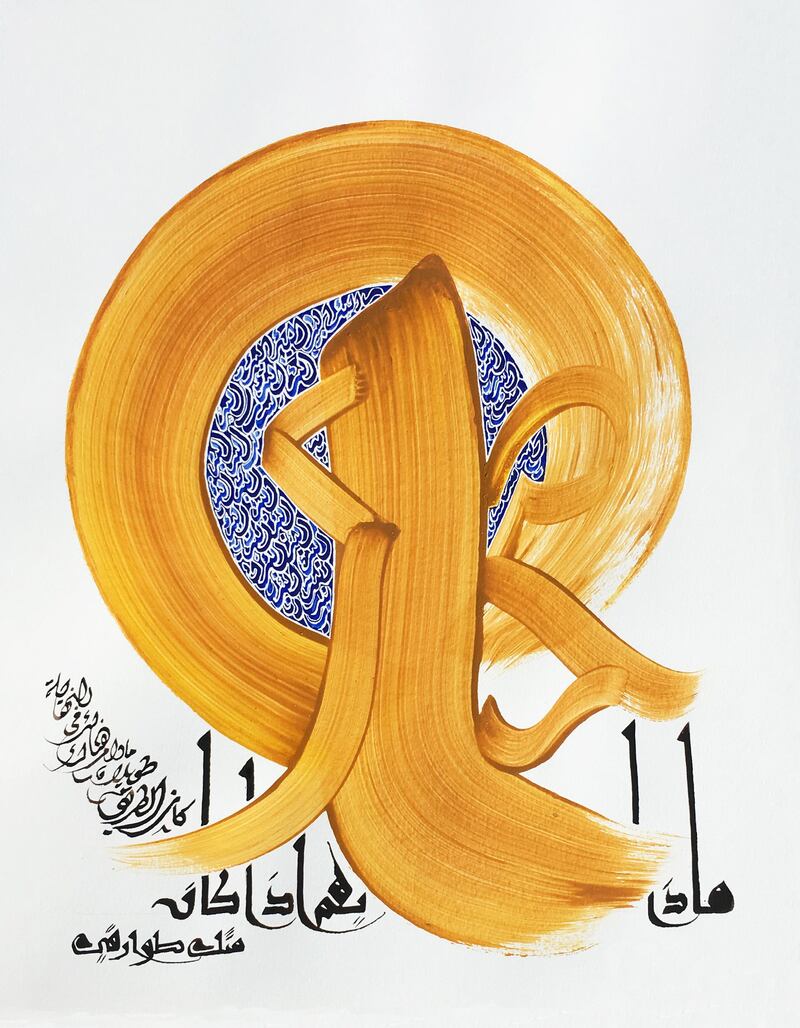In the early 1970s, Hassan Massoudy received an offer to lead a calligraphy workshop in the deserts of Mauritania.
Seeking to escape a Parisian winter, he accepted. With his reed pens, brushes and ink bottles packed, he travelled to the North African country with his wife, Isabelle.
The trip marked the first time Massoudy had been in a desert since he left his native Iraq in 1969. Surrounded by the enigmatic expanse, Massoudy realised how much of the desert he carried within him. His wife, too, became mesmerised by the landscape's vastness and stillness.
In a way, Massoudy's newest release, Calligraphies of the Desert, has been in the works since then. The pocket-sized book, a compilation of artworks and texts, is as much a visual ode to the arid terrain – long misunderstood for its cruel, scalding antagonism to life – as it is an opportunity to view the desert in a new light.
In the decade following that initial trip, the couple made periodical excursions to the deserts across North Africa, trekking across the sands of Mauritania, Algeria and Morocco. Sometimes it was Massoudy’s workshops that prompted their travels. Other times, it was simply the couple’s desire to explore the dunes rolling in continuum.
"We would be surrounded by them," Massoudy tells The National. "After nightfall, we'd stay in a large tent, where Isabelle would read poetic and literary texts by candlelight written by those who travelled the desert, from hundreds of years ago to our present day."
Upon returning to Paris, where the couple reside, Isabelle would visit libraries, reading and documenting whatever texts she could find about the desert.
“In turn, I began drawing calligraphy based on the texts,” Massoudy says.
Calligraphies of the Desert is a product of that collaboration. The Iraqi artist honours the landscape by taking the works Isabelle collected over the years and interpreting them through Arabic calligraphy. The texts include proverbs from around the world, as well as poetic reflections about the desert's symbolism by the likes of Rumi, Goethe and Abu Nuwas.
“The way lies beneath your feet” reads one of the quotes in the book in Arabic and English. Across the page from the proverb, in thin, precise lines, Massoudy's calligraphy evokes a sense of movement and progress.
Another artwork shows a broad, crimson semi-circle footed by an undulating calligraphy stroke that reads 'biir', the Arabic for well. On the page across is a quote by The Little Prince author Antoine de Saint-Exupery, which reads: "What beautifies the desert is that it hides a well somewhere."
Arabic calligraphy, in the way it braids and ebbs, may be the perfect artistic medium with which to pay tribute to the desert. But Massoudy wanted to do more than just visually allude to the landscape; he wanted the desert to actually form a part of the book.
“Some of the earthy colours I used were actually derived from the desert,” he says. For instance, a brown ink was made using a thousand-year-old technique, which involves burning a clump of wool and leather in a bowl until a paste is formed. “We can then make tablets out of that paste. Mixing the tablets in water gives us ink," he says.
“We also had to see how to cohesively match the black calligraphy with the coloured ones facing it. Every page required discussion and dialogue.”
The texts found in Calligraphies of the Desert unpack many of the landscape's timeless associations, such as solitude and perseverance. But there is also another driving element within the book – the warmth of a home town Massoudy has not visited in more than 50 years.
The artist says he only began to think about what the desert meant to him after he left Iraq in 1969. The country at the time was undergoing major political upheavals as the Arab Socialist Ba'ath Party established its ruling position. Distraught at the country’s political circumstances and tired of drawing calligraphy on store banners and other non-artistic commissions, Massoudy, then 25, left to study at France's National School of Fine Arts.
Since then, he has established himself as one of the world's top calligraphers. His public performances, which combine music, poetry and live calligraphy projected on a screen, have paved the way for a new generation of calligraphers, including French-Tunisian street artist eL Seed, who has credited Massoudy with revolutionising the art form.
Now in his late seventies, Massoudy affectionately recalls his home town of Najaf. The city, located about 160 kilometres south of Baghdad, was paramount, he says, to his relationship with the desert.
“Najaf was a small city then, one that was surrounded by the desert. Its narrow, dark alleys would suddenly be confronted by the sun’s golden light. It was situated 30 metres above the Euphrates, so it was constantly thirsty. The desert entered our city and we always wandered in the desert," he says.
Though the book’s title and contents may refer to the desert at large, Massoudy notes that each country has its own variant of the terrain.
"In the Mauritanian city of Chinguetti, when entering from the side of the valley, the sand is clean and amazingly white, like flour. In the city of Djanet in southern Algeria, there are high rocks sculpted by nature," he says.
"They resemble the works of the sculptor Henry Moore. It gives the feeling of being in an open-air museum.”
Calligraphies of the Desert is published by Saqi Books
